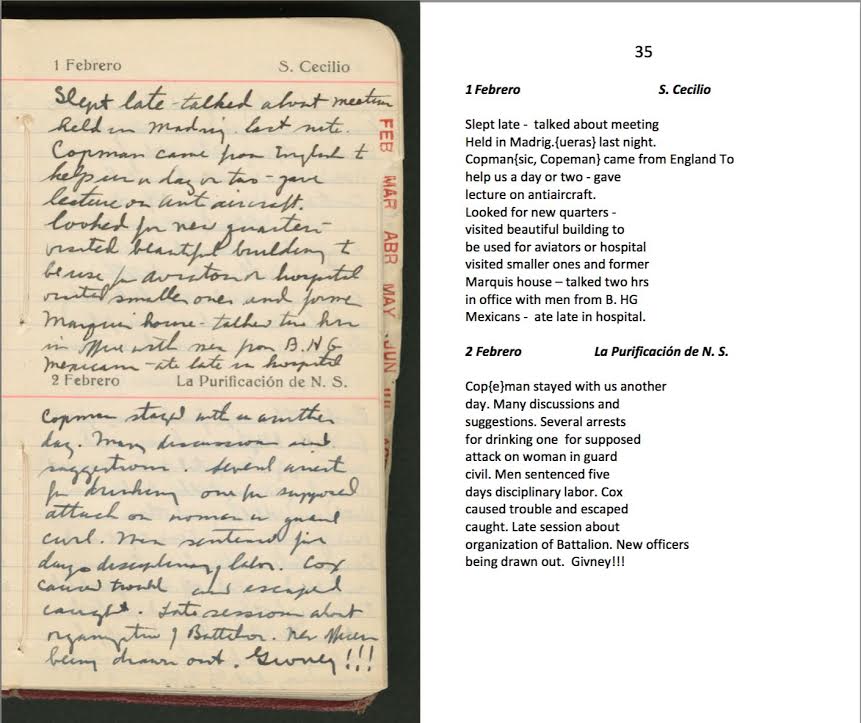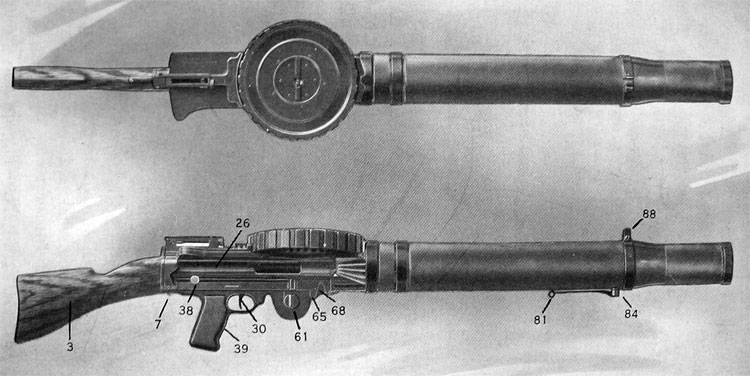

Fred Copeman in his autobiography Reason in Revolt refers indirectly to the tools related to his anti aircraft lecture as mentioned by Merriman:

I concentrated on the Lewis gun, easy to handle and very light, and I knew all about. In the end, six of these guns were made serviceable, and either by design or by accident, I found myself in command of a small anti-aircraft unit….. The Lewis gun section soon became efficient. An old trick was to throw tin lids into the air from the trenches, the gunners having to hit them before they touched the ground. No small feat this, and yet every No.1 gunner within three weeks was able to hit the lids two at a time in the air.¹
Merriman relates that he is shopping for new quarters for the Americans. He looks at buildings presumably in Villaneuva de la Jara. The size of the training battalion is having growing pains.
Merriman speaks of the feistiness of the men and the drinking which needed correction. Since last year’s posting of this page, Barry McLoughlin has finished his work on the Irish in Spain and he relates:
As regards excessive drinking, there seems to have been a temporary ban on the sale of alcohol in the village {Madrigueras}, to which the men reacted by ordering café frio, a potent mixture of cold coffee liberally laced with rum. Fred Copeman, in his chortling interview with the Imperial War Museum, mentions a “punch-up between the Irish and the English late at night …. sent to the guardhouse …. trivial stuff”, adding the erroneous comment that this was the reason that Frank Ryan took his men to the American Battalion. In fact the very opposite was the case, but “old Fred”, for all his affability, was never a stickler for historical detail, neither in his memoir of the war (1948) nor in the interview he gave in 1978.²
Several men are reprimanded and one deserts. “Cox” is very likely Thomas Cox Jr.. He was born in Douglas, Alaska, and was a Native American. Two weeks after Merriman wrote this page, Cox would be in one of two trucks that accidentally drove into the enemy lines on February 16, 1937, moving to the lines at Jarama. Fifteen Americans and one Canadian were killed, and only one wounded prisoner survived, but had his throat cut by a band of scavenging Moors that night. Cox arrived in Spain on January 23rd 1937.
“Givney” is John Givney, and who will continue to be a thorn in Merriman’s side all spring. His transgression here is not detailed anywhere.
____________________________________
¹Fred Copeman. Reason in Revolt. Blandford Press, 1948. p. 81.
² Barry McLoughlin, Fighting for Republican Spain, Lulu.com, ISBN 9781291968392, p. 58.
